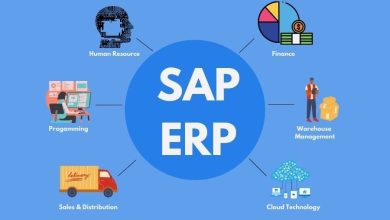From Data to Insights: The Lifecycle of Data Science

Data science in Malaysia is a process that takes data from raw form to actionable insights. It is a cycle that starts with discovery and end with communicate results. Throughout this process, there are several steps that must be followed in order to ensure accuracy and success. In this blog post, we will describe the lifecycle of data science and explain each step in detail!
What is Data Science?
Data science is an interdisciplinary field that uses scientific methods, processes, and systems to extract knowledge and insights from data in various forms, both structured and unstructured. It is a relatively new field, although it builds on many older fields such as statistics, computer science, and mathematics. Data science is concerned with all aspects of data: its collection, cleaning, analysis, and interpretation. The goal of data science is to turn data into actionable insights that can be used to solve real-world problems. In recent years, the availability of high-quality data has driven the growth of data science. As more and more organizations increasingly rely on data to make decisions, the demand for skilled data scientists has never been higher.
The Data Science Lifecycle
The data science lifecycle typically consists of six stages:
Phase 1—Discovery
As a data scientist, one of the most important things you can do is to ensure that you have a strong understanding of the problem that you are trying to solve. This means working closely with the business to get a clear picture of their goals and objectives. It also involves collecting and analyzing data to get a better sense of the nature of the problem. This can be a challenging process, but it is essential for ensuring that you are able to find the right solution. By taking the time to fully understand the problem, you can increase your chances of success and make a positive impact on the business.
Phase 2—Data preparation
Once you have a good understanding of the problem, you can begin to prepare the data for analysis. This involves cleaning and processing the data so that it is ready for use. This can be a time-consuming process, but it is essential for ensuring that the data is of high quality and will be useful in finding a solution to the problem. Data preparation involves tasks such as data cleansing, data transformation, and data integration.
- Data cleansing is the process of identifying and correcting inaccuracies and inconsistencies in the data.
- Data transformation is the process of converting data from one format to another.
- Data integration is the process of combining data from multiple sources.
These processes are essential for ensuring that the data is clean, accurate, and usable.
Phase 3—Model planning
After the data has been prepared, you can begin to plan the model. This involves deciding on the type of model you will use and what features you will include in the model. The model planning phase is important for ensuring that you build a model that is effective and efficient. For example, if you are using a linear model, you will need to select features that are linearly correlated with the target variable. If you are using a tree-based model, you will need to decide how deep to grow the trees and what stopping criteria to use.
The planning phase is also important for identifying any potential problems with the data that could impact the performance of the model. For instance, if there are missing values in the data, you will need to decide how to handle them. By taking the time to plan the model carefully, you can ensure that you build an effective and efficient machine learning algorithm.
Phase 4—Model building
After the model has been planned, you can begin to build it. This involves writing the code for the model and training it on the data. The model building phase is important for ensuring that the model performs well on the data. It is also important for making sure that the model is able to generalize to new data. To do this, you will need to split the data into a training set and a test set. The model will be trained on the training set and evaluated on the test set. By taking the time to build a well-trained and well-tested model, you can ensure that the model is ready for deployment.
Phase 5—Operationalize
After the model has been built and tested, you can operationalize it. This involves packaging the model so that it can be deployed in a production environment. It also involves setting up monitoring and logging so that you can track the performance of the model over time. By taking the time to operationalize the model, you can ensure that it is ready for use in the real world.
Operationalizing the model includes creating a deployment package, which contains all of the files necessary to run the model. It also includes setting up monitoring and logging, which will allows you to track how well the model is performing. In addition, operationalizing the model may involve creating training data sets and documentation so that others can use the model. By taking these steps, you can ensure that the model is ready for use in the real world.
Phase 6—Communicate results
After the model has been operationalized, you can begin to communicate the results. This involves creating reports and visualizations that explain how the model works and what it is able to achieve. It is also important to communicate the results of the model to stakeholders so that they can understand how it can be used in their business. By taking the time to communicate the results of the model, you can ensure that it is used effectively.
Final Thought
The data science lifecycle is an iterative process that begins with problem discovery and ends with communication. By understanding the steps in the data science lifecycle, you can ensure that your machine learning algorithm is effective and efficient. Thanks for reading! I hope you found this post helpful. If you have any questions, please feel free to leave a comment below.
This article is posted on Drop Article.




